Forgetting About Breakfast and Focusing on Beirut
We woke up in our room at Talal’s New Hotel in Beirut, Lebanon. Despite the fact that it was well after 10:00 am, we picked our way over the bodies of the other sleeping guests, which were strewn all around the place, in order to get outside.
The first order of business was, of course, eating. And we found a reasonable looking place not far from our hotel. It was a kind of a delicatessen, advertising falafel wraps, hummus and the like. Being accustomed to the normal Middle Eastern practice of ordering a number of plates and eating them with bread, we did so.
The owner was more than happy to oblige us, making sure, however, to caution us that plates would be more expensive than sandwiches. The sandwiches were very affordable, though, so we figured all would be okay. Wrong we were, for when the bill came, it was so large that it could have bought 25 sandwiches easily. Â It was probably time to protest, but, perhaps in a moment of weakness, we just paid the bill and left in a foul mood, hoping that a little wheeling might help to erase this expensive and distasteful experience from our minds.
And that it did. We headed first down to the oceanside, where we began to skirt the coast, taking in the city of Beirut, which rose into the hills to our left.

It was quite an impressive place, bustling with giant new construction projects, and already punctuated with modern-looking high rise apartment blocks.
Looking to our right, the geology of the coastline proved not only interesting, but strikingly beautiful.  On top of it, giant cast concrete shapes provided an intended erosion barrier between the beach clubs and the sea.
The city was perched on a bank of cliffs, overlooking the luscious blue of the Mediterranean Sea. As the cliffs made their way down to the water, at the point where the surf made contact, they spread out into large plate-like structures which served as the perfect spots to harbor all kinds of sea plants and animals. The structures themselves, I had a suspicion, might even be the result of many years of habitation by creatures that left some kind of sediment behind. These days the wide seaside plates, also acted as a perch for the many sun-baked local fishermen who dotted the coastline.
Traffic was, in a completely unprecedented way, completely insane. We were becoming accustomed to the sound of squealing tires and the smell of burning rubber; the sight of young Lebanese men in luxury cars drag racing at stop lights was also no surprise. I even saw a few cars pull hand brake turns in relatively empty intersections.
Given all this automotive madness, we were quite glad to move off the street and onto a kind of seaside promenade, which had been constructed in what one might call the European style. We rode along this, enjoying the sun, the water, and the various seaside operations that were scattered along our route, many of which seemed to be focused on scraping muck up from the seafloor and monetizing it in some way.
We were forced to join traffic again when the road rounded a corner and we began to climb, following the cliffside as it grew higher and higher above sea level. Soon we were rewarded with a grand view of the Mediterranean Sea.
It was a vision we were familiar with from the posters that hung in most Lebanese restaurants in the U.S. It was the impossibly blue-green glassy ocean, out of which giant golden rocks jutted, accented with tufts of green plant life. The idyllic scene was only slightly marred by a giant flotilla of plastic post consumer waste, which had, due to the prevailing currents, been corralled just below the epic rock face.
On we went, tearing ourselves away from the view and continuing to slug up and over the hill, which spilled out into a long easy downhill back toward sea level. Partway down the hill, however, we spotted a bent and crumbling barbed wire fence, which separated us from a giant abandoned lot overlooking the sea.
We decided that with the fence in so dilapidated a state, and with Lebanon being, as it is, mostly devoid of government, it was likely no one would mind if we just wheeled right on in.
Inside we found a grid of half finished concrete streets that might, at one point, have been intended to serve a small grid of housing blocks. They had long been neglected, though, and were now strewn with trash, and overgrown with coastal grasses. We continued to wheel on into the abandoned lot, past a number of shipping-containers-turned-housing structures. Most of them showed signs of at least semi-recent occupation, but we did not run into any inhabitants.
All around us were the remnants of half built buildings, and the refuse of vagrants. It was delightfully raw. As we rode on, we wondered: what had ceased completion of this housing project? What had taken this prime piece of seaside real estate and turned it into a post apocalyptic wasteland?
At the end of the crumbling half-built road, we were rewarded with a delightful view of the rich blue sea and the patchwork of plate-like formations which were to be found where the cliffs met the ocean.
We took a moment to sit down and rest in a makeshift cliff-side bungalow, where we found a couple of serviceable plastic chairs and a little shade.
We spent a while taking it all in, perched up there with the magnificent view, before climbing back on the cycles and riding back to the main drive.
We headed on, past a rather large road-side sheep-selling operation, which heralded our entrance into the older and poorer part of the city. Lebanon is a very mixed place, with Muslims and Christians of many ethnicities living together, now at least in relative peace. We had been staying in the richer, Christian part of town, but we were now heading into the poorer Muslim section.

We rode on past fruit sellers and countless auto parts shops. The architecture in this part of town took a turn for the fascinating, with the return of the Damascus-style intersection between traditional Islamic buildings and 1970s brutalism.
Our pining for Syria was only strengthened by this bit of pro-mayonnaise graffiti.
On we went, deeper into the Muslim part of Beirut. Not more than 20 years ago, these two parts of the city had been at war with one another. And though peace had returned to the city, one could defiantly feel that the Christian part of town had come out on top. The streets here were more crumbling, filth was more prevalent, children wandered with no shoes, and the general nature of the buildings and businesses around us was less about flash and glam, and more about getting things done, putting food on the table, and the like.
Speaking of food, we noticed we were hungry and stopped when we saw a few vendors selling bananas and Arabic sweets out of the back of a bread truck.
The sweets were amazing, though the vendors proved particularly grumpy when they discovered our order was just a small sampling of each.
So on we went, wheeling harder now, really pushing ground by. We stopped at a couple of bike shops, in hopes of buying some new bike lights, but it seemed that in Beirut all bike shops were actually toy stores, which just placed bikes outside to lure cyclists in and them sell them beach and sandbox-related products.
As happens from time to time on AsiaWheeling, we took a wrong turn and ended up in a family’s yard.

This one was particularly interesting as it contained a smiling child holding a rifle. He was more than happy to point us back toward the main road, and waved us off leaning on his firearm.
Soon the city fell away and we were out into a rocky desert. Up ahead we could see a large tunnel looming, and we decided to take it. It was a particularly hairy mission, pedaling through that deafening tube, enduring strange puffs of wind, and close calls with mad Lebanese drivers.
We discovered it was a tunnel underneath the Beirut airport when we found ourselves suddenly outside again, squinting in the sunlight, ears ringing, and surrounded by barbed wire fencing and radar towers. Perhaps even more interesting than the airport was the fact that we had found ourselves also at a giant sewage outlet, where it seemed all the excrement of the city of Beirut was being let out into the sea. We paused to catch our breath and watch the complicated merging of the river of filth and the beautiful blue sea.
When we climbed back on the cycles to head onward, we found ourselves riding though a remarkable wasteland of trash. The garbage was piled high along the side of the road for kilometers. It was as though a thousand buildings had been torn down, still full of stuff, and all the refuse piled along this freeway.
Now well out of the city, and free of traffic lights, pedestrians, and other obstacles, the traffic speed picked up greatly. Once again, it seemed prudent to move from the road proper onto the large sidewalk that ran alongside it. And once again, like in Jordan, this sidewalk proved to be just littered with broken glass. We once again trusted in our Kevlar tires, and our general ability to avoid especially pointy bits, and wheeled on.
Not far after the sewage outlet we found ourselves arriving upon a new city, by the name of Saida. There, we decided begin our journey back to the Beirut. We seriously considered making some great loop, but it appeared to us that one might end up trapped in some restricted airport zone ahead of us. So we pulled our Dahons around, and started the long retrace back to the city.
We arrived just as the sun was setting, and we were absolutely starving. We dined that night at a pretty swanky Lebanese place, ordering our usual Middle Eastern meal of hummus, salads, kebabs and flatbread. The meal was glorious, and at a white tablecloth, multiple-forks-per-person type place.
As I ate I tried not to let the fact that our mediocre breakfast at a random sandwich joint had cost almost three times as much…
































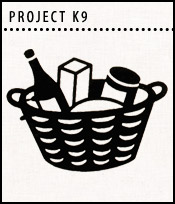
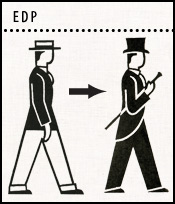
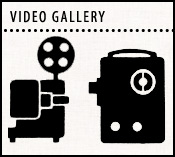
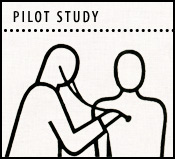
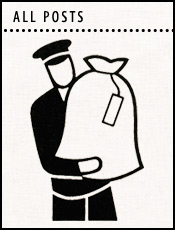
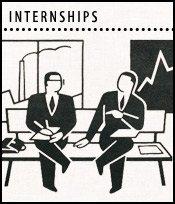




Comments
Thought you guys might be interested to see this. I forwarded this post to a good friend of mine who grew up outside of Beirut and still spends 3-5 months there a year (if he can): “… the graffiti in the second to last picture says: “The Road of Death” “God me with you Mahmoud, we will not forget you” with the date 6/26/2010. Seems like there was a car accident there or something.” Kinda cool to get another layer of the story.
wheel safe
rcm
@ RCM
Thanks! That’s fascinating.